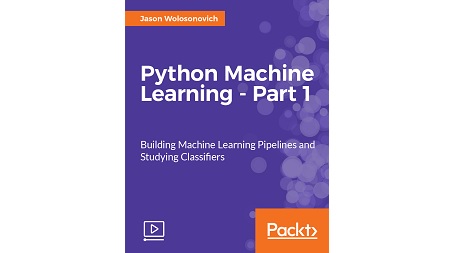
English | MP4 | AVC 1280×720 | AAC 48KHz 2ch | 3h 22m | 456 MB
Building Machine Leaning Pipelines and Studying Classifiers
Unlock deeper insights into Machine Leaning with this vital guide to cutting-edge predictive analytics
Machine learning and predictive analytics are transforming the way that businesses and other organizations operate. Being able to understand trends and patterns in complex data is critical to success, and is becoming one of the key strategies for unlocking growth in a challenging contemporary marketplace. Python can help you deliver key insights into your data. Its unique capabilities as a language let you build sophisticated algorithms and statistical models that can reveal new perspectives and answer key questions that are vital for success.
This video gives you access to the world of predictive analytics and demonstrates why Python is one of the world’s leading data science languages. If you want to ask better questions of data, or need to improve and extend the capabilities of your machine learning systems, this practical data science courseis invaluable. It coversa wide range of powerful Python libraries, including scikit-learn, Theano, and Keras, and featuresguidance and tips on everything from sentiment analysis to neural networks. With this video,you’ll soon be able to answer some of the most important questions facing you and your organization.
What You Will Learn
- Discover the different types of machine learning and know when to use them
- Explore machine learning algorithms and implement them in Python
- Use powerful open source machine learning libraries to train predictive models
- Use pandas, NumPy, and matplotlib to manipulate data
- Evaluate and fine-tune machine learning models
Table of Contents
Giving Computers the Ability to Learn from Data
The Course Overview
Transforming Data into Knowledge
Types of Machine Learning
Training Machine Learning Algorithms for Classification
Implementing a Perceptron Algorithm in Python
The Iris Dataset
Training the Perceptron
Improving the Visualization
Adaline in Python
Feature Standardization
Implementing Adaline
A Tour of Machine Learning Classifiers Using Scikit-Learn
Scikit-Learn Perceptron
Logistic Regression in Scikit-Learn
Predicting Class Probabilities
Training a Support Vector Machine in Scikit-Learn
The Effect of Gamma
Decision Trees
Building Good Training Sets – Data Preprocessing
Handling Data
Mapping Ordinal Features
Feature Scaling
Feature Importance’s with Random Forests
Resolve the captcha to access the links!